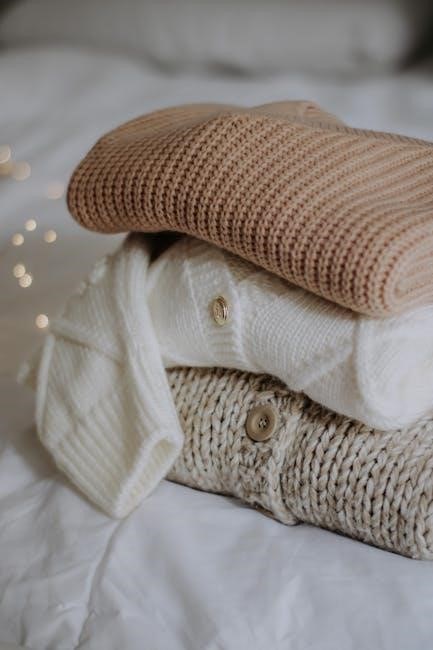Understanding button sizes is crucial for sewing and crafting projects, and a button size guide provides essential information on various button sizes and measurements, using terms like ligne for accuracy always online.
Understanding Button Sizes
To understand button sizes, it is essential to know that buttons come in various sizes and measurements, and a standard system is used to classify them. The French term ligne is commonly used to measure button sizes, where 1 ligne is equivalent to 0.635mm. This system allows for accurate measurements and classifications of buttons. A button size guide provides a comprehensive overview of the different button sizes, including their measurements and corresponding ligne values. By understanding button sizes, individuals can make informed decisions when selecting buttons for their projects. The use of a button size guide can help to ensure that the correct button size is chosen, reducing errors and improving the overall quality of the project. With the wide range of button sizes available, understanding the different sizes and measurements is crucial for achieving professional-looking results. This knowledge is essential for sewing and crafting projects.

Common Button Sizes
Standard sizes include 16L, 32L, and 44L, commonly used for shirts, jackets, and coats, with 24L for pants and skirts, using ligne measurements for accuracy and consistency always online.
Standard Button Sizes for Shirts, Jackets, and Coats
The standard button sizes for shirts, jackets, and coats are typically measured in ligne, with 16L being the smallest and 44L being the largest. These sizes are commonly used in the garment industry and are available in a variety of materials and colors. The size of the button used for a particular garment depends on the type of garment, the fabric used, and the desired look. For example, a dress shirt may use a smaller button, such as 16L, while a coat may use a larger button, such as 32L or 44L. Understanding the standard button sizes for different types of garments is essential for sewing and crafting projects. A button size guide can provide valuable information on the different sizes and types of buttons available, making it easier to choose the right button for a particular project. The use of standard button sizes ensures consistency and quality in garment construction.
Button Size Measurements
Button sizes are measured in ligne, with 1 ligne equal to 0.635mm, and are used to determine the correct size for various applications and projects always using standard units online.
French Term Ligne and Button Size Conversion
The French term ligne is used to measure button sizes, with 1 ligne equal to 0.635mm, and 40 ligne equivalent to 1 inch or 25mm, making conversions essential for accurate sizing.
Using a conversion chart or guide is helpful in determining the correct button size, as the conversions can be complex and difficult to calculate mentally.
Having a reference point, such as a button size chart, can aid in selecting the appropriate button size for a project, ensuring a professional finish and proper fit.
The use of ligne as a unit of measurement for buttons allows for precise sizing and consistency across different manufacturers and suppliers.
This consistency is crucial in the sewing and crafting industries, where button size can affect the overall appearance and functionality of a garment or item.
Understanding the French term ligne and its relationship to button size conversion is vital for anyone working with buttons, whether professionally or as a hobbyist, to achieve accurate and high-quality results.
A button size conversion chart can be a valuable resource in this context, providing a quick and easy way to determine the correct button size.
By using such a chart, individuals can ensure that their projects are completed with precision and attention to detail, resulting in a polished and professional finish.

Button Size Chart
A button size chart provides a comprehensive list of button sizes, helping to determine the correct size for projects, using online resources for accuracy and convenience always available.
Using a Button Size Chart as a Reference
Using a button size chart as a reference is highly beneficial for individuals involved in sewing and crafting projects. The chart provides a comprehensive list of button sizes, making it easier to determine the correct size for a particular project. By referring to the chart, users can ensure that they are using the appropriate button size, which is essential for achieving a professional finish. The chart is particularly useful for those who are new to sewing and crafting, as it helps to eliminate the guesswork involved in selecting the correct button size. Additionally, the chart can be used as a reference guide for experienced sewers and crafters, helping to save time and reduce errors. Overall, a button size chart is a valuable resource that can help to ensure that buttons are used correctly and effectively in various projects, and it is widely available online for convenience.

Types of Buttons and Their Sizes
Various buttons have distinct sizes, including flat, dome, and shank buttons, each serving specific purposes and uses always online with different size options available for selection purposes.
Buttons for Pants, Skirts, and Crafts
Buttons for pants, skirts, and crafts come in a variety of sizes and types, with 24L being a common size for these applications. The choice of button size depends on the specific project and the desired aesthetic. For example, smaller buttons may be used for delicate crafts, while larger buttons may be used for heavier fabrics like denim. Additionally, the type of button used can also vary, with flat buttons being suitable for pants and skirts, and shank buttons being used for thicker fabrics. The French term ligne is also used to measure buttons for these applications, with 40 ligne being equivalent to 1 inch or 25mm. Having a button size chart as a reference can be helpful when selecting buttons for these projects, ensuring that the right size and type of button is chosen for the specific needs of the project, including pants, skirts, and various crafts.

Importance of Correct Button Sizing
How to Choose the Right Button Size for Your Project
To choose the right button size for your project, consider the type of garment or item you are making, as well as the style and design you want to achieve.
Using a button size chart can be helpful in determining the correct size, as it provides a reference point for different button sizes and their corresponding measurements.
You should also think about the size of the buttonhole and the thickness of the fabric, as these factors can affect the overall appearance and functionality of the button.
Additionally, consider the level of detail and precision you need for your project, and whether you need to use a specific type of button or measurement system, such as the French term ligne.
By taking these factors into account, you can select the right button size for your project and achieve a professional-looking finish.
to Button Size Guide
By understanding button sizes and how to measure them, individuals can ensure that their projects are completed to a high standard, with professional-looking finishes.
Overall, a button size guide is an essential tool for anyone looking to create high-quality garments and textiles, and can help to save time and reduce errors.
